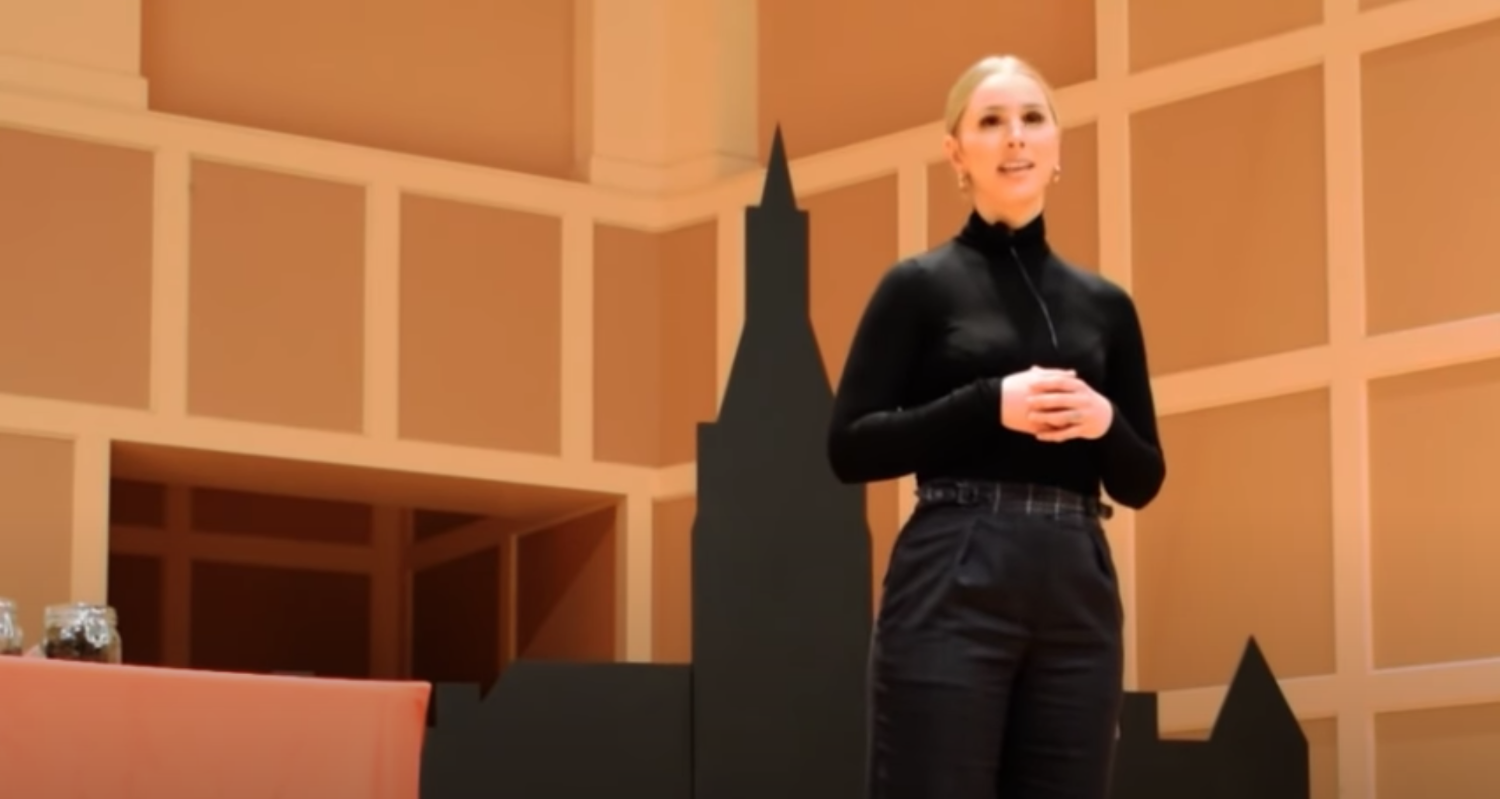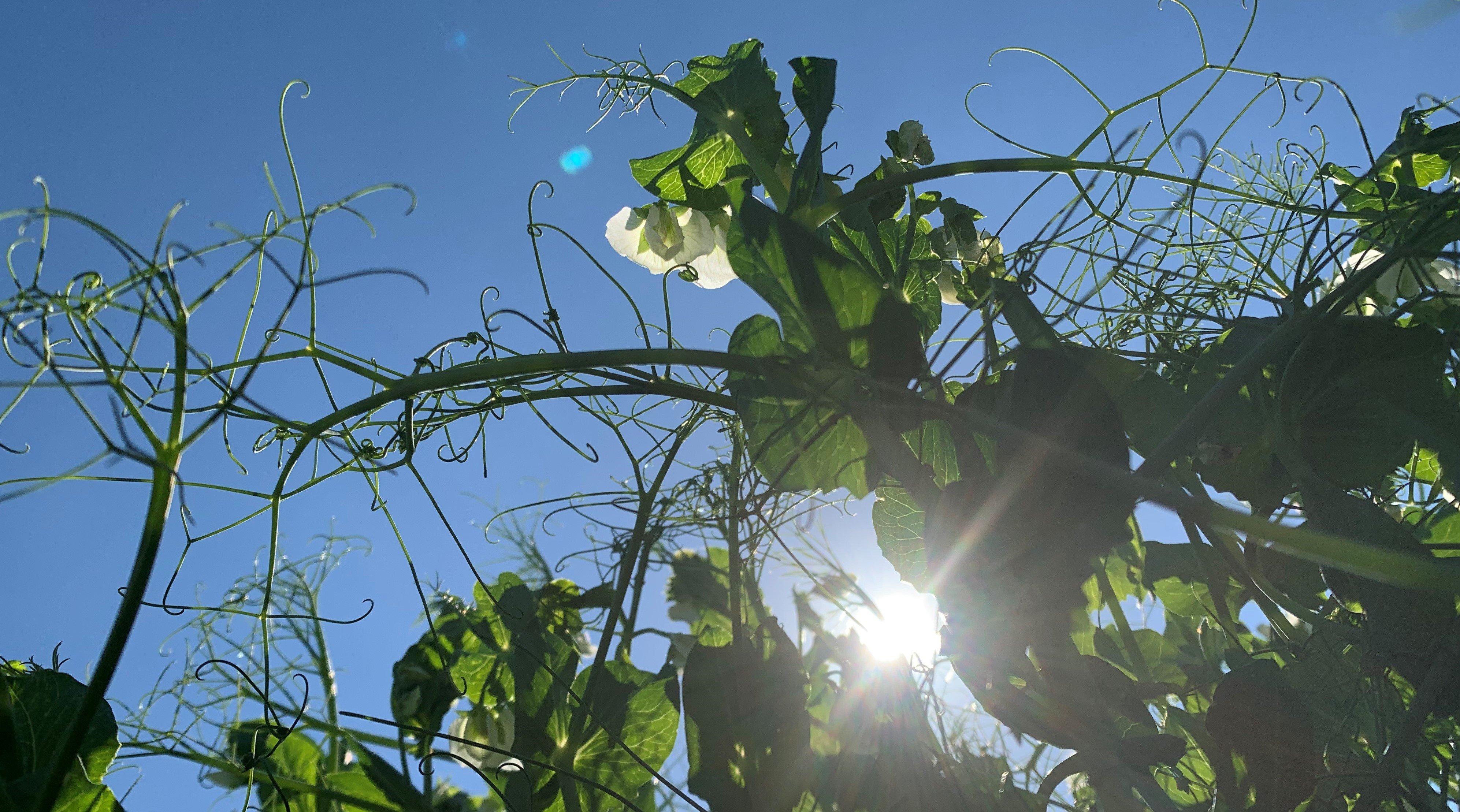I remember sitting in class my senior year of college learning about the impacts of harsh agricultural practices on our environment thinking how does this all connect? Studying health in relation to only the human body didn’t really make sense to me at the time, but I couldn’t pinpoint how to connect the dots. It wasn’t until I started at PURIS that I realized how deeply everything in this world is intertwined. Our soil impacts our health, our food choices impact not only our health but our environment, the list continues to go on.
The most exciting part? The pea lies in the epicenter of it all, perfectly and beautifully bringing out the best in the environment, health, and food stability. Working at PURIS with the team here has inspired me beyond anything I could have ever imagined. Companies have an opportunity to connect all the dots, working with the environment, providing nourishing food, and feeding the world — and PURIS is doing just that. Sharing my ideas on the TEDx stage was truly a dream come true and an experience I’ll never forget — remember, if all else fails, enjoy life and eat more peas!
"I LOVE basketball, I remember being a kid and disappearing to the gym after school until late at night.
And my passion for basketball brought me here to Hamline, where I spent my freshman year on the bench. You can laugh at that. That summer I vowed I would do anything in my power to see time on the court my sophomore year, and I did.
At 19, life was good.
I was in school and living out my dream as a college athlete. I remember the day of my first game so vividly. There’s this thrill that runs through your entire body and your constantly bouncing in between total excitement and complete terror, and as I’m driving to my first game — listening to my favorite music, running through plays in my head — SMACK. I come to my senses and the throbbing pain in my head is excruciating.
I had been in a car accident, and was left with a traumatic brain injury — a severe one.
One that took out of school and ended my basketball career. I was devastated.
The following year was full of intense rehabilitation therapy, debilitating headaches, depression, troubles with learning, vision, processing — a lot of failures. And a lot of questions of what’s next?
I finally returned to school and started working as a nursing assistant. I met some incredible people during this time, who, in the midst of pain, illness, and loss welcomed me into their homes like family and shared their world with me.
One day a nurse came to visit the home of the patient I was caring for at the time, and during her visit the nurse looked at my patient and she said, “If you don’t change your lifestyle, you will not be able to live at home anymore. You are too sick.” And after the nurse left, my patient with tears in her eyes looked at me and said, “I don’t know where to begin.” And I didn’t either! I too was struggling with my health and honestly had just begin to accept that life was just going to be more of a challenge. I felt hopeless.
You see, my time after the accident showed me how disconnected we all are, myself included, from the things beyond our standard medical system that impact our health. Food, exercise, environment, relationships, stress, I could go on… and from where I was standing, optimal health was at the top of a very tall mountain, and I felt so small.
In my quest for wholeness I went back to the genesis of good health — the very food we eat.
I enrolled in Cornell University's Plant Based Nutrition Program and soon found out this was my new passion and purpose. It may sound crazy, but plants have changed my life. They’ve completely improved my health, and they’re changing the world too.
To understand my passion a little better, I want to take you on a journey to where our food is cultivated — the farm.
I have two stories to share with you
The first story I’d like to share with you is about a group of farmers across Montana whose community relies upon agriculture to survive (Great Falls Tribune). They rely upon the farms and the farmers to grow crops, hire people, and provide food to the community and the rest of the nation. Several years ago, these farmers ran into some challenges. They started realizing their soil wasn’t healthy, and, as a result, their harvests were diminishing. They were needing more water to keep their plants alive, weeds became incredibly difficult to manage, the use of fertilizer started to increase, and the lakes and streams surrounding this community became polluted with farm runoff.
The second story I want to share with you is about a community in Honduras. Very similar situation, a town dependent on the farms and the farmers to provide food, sustenance, jobs (IYP). They too ran into the same challenges. Their soil wasn’t healthy, and their food sources were decreasing. In addition, this community started experiencing devastating land erosion, poverty, and the rates of malnutrition rose significantly.
Now, what moved me most about both of these stories is that both communities were able to completely turn their reality around in a relatively short period of time.
What was responsible for their miraculous recovery? Peas.
They added peas into the rotation of their crops.
The power of plants and their ability to heal our environment, heal our bodies, and feed an ever growing population is the reason I stand in front of you today.
I have a very strong belief, you might think I’m crazy.
I believe peas will save our planet
You may laugh now but you’ll be crazy with me at the end — and I want to show you HOW.
But first I want everyone to think about something they had to eat in the last 24 hours.
Chances are, whatever you ate at some point along its journey started in the soil . That’s where all of this starts, the soil, it’s where we grow our food but it also houses trees that help us breathe. Nearly everything we do starts in the soil (Kiss the Ground).
In reality, it was more likely that whatever you ate was grown in unhealthy soil. It was cultivated in an environment that could not support it.
The soil that is sustaining life today isn’t healthy.
In fact, every minute we are losing 1/5 of a mile of healthy soil (FAO). That means by the end of this talk, in the next 13 minutes, we’ll have lost nearly 24 square miles of healthy soil. This rapid decline in soil health is occurring at a rate 100 times faster than it would naturally.
Why? Intense farming practices are disturbing the organic soil matter which house these little bacteria called microbes (Gomiero).
What are microbes?
Microbes are what give our food and our food’s food nutrients to grow into health and strong plants.
I want to show you a little demo. Let’s take a look at these two bowls of soil. They look relatively the same right? This teaspoon of soil contains healthy organic matter with about 10 billion microbes in a single teaspoon (NRCS). There are ten billion microbes in this teaspoon of soil. This is IDEAL soil.
This other teaspoon has been degraded to around 50%, about half, of its natural healthy state due to intense farming practices, which have unfortunately become the norm these days (The Conversation). This is our reality. Expectation, reality.
Is 50% a big deal? Let’s put it this way, with a deficit of active microbes, it gets really, REALLY hard to grow food for us and our livestock.
So, how do we grow food when our soil isn’t healthy?
Well, unfortunately we’ve turned to added fertilizers and other intense practices — which work well until they wash into our waterways, completely degrade our soil or make our crops more susceptible to disease, drought, and illnesses. In the last 12 years, we have spent $51 billion to boost our food’s growing production due to unhealthy soil and lack of proper microbes (The Soil Health Institute).
The consequences of unhealthy soil are seen far beyond the farm
We see them in our waterways (Dupas et al.), and eventually in the oceans where they take the form of dead zones (Ramankutty et al.). Unhealthy soil contributes to dangerous erosion (Borrelli et al.), unpredictable flooding (Abdallah et al.), farmers increasingly reliant on herbicides, pesticides, fertilizers, and a whole heck of a lot more (Oldeman, Hakkeling, and Sombroek).
There are some changes we can make now however that will have drastic effects on our future and the first thing we have to do is get down and dirty with the way we are treating our soil.
Before we dive in, let’s talk about some indisputable facts.
Everything needs nitrogen to grow, including that food you ate. AND when there’s not a natural abundance of nitrogen to grow our food we have to add it back through fertilizer. Global use of nitrogen fertilizer is by far the largest. In 2018 alone there was nearly 118 million tons of nitrogen added to plants (FAO). You may be looking at me thinking why is this a big deal? Google dead zones, it’s just one of the many consequences of dumping nitrogen on the land.
Now here’s another indisputable fact, and this is an exciting one:
Peas create their own fertilizer
They promote a process called nitrogen fixation (GRDC). They're one of the only plants in the world that are able to do this. The pea plant takes carbon from the air and converts it into a sugar, the sugar then travels through the plant and out through the roots, and into the soil where it feeds the microbes. I’ll say that again because it’s a lot — carbon from the air, into sugar, through the plant, out through the roots feeds the microbes. The microbes then use the sugar to convert gaseous nitrogen from the air and the soil into a useable form of nitrogen for the plant.
This process doesn’t only make the peas healthier, it makes the microbes healthier, and nitrogen naturally placed in the soil, WITHOUT the need for added fertilizer. Guess what happens to something that’s planted after a pea? Well, the soil is healthier, so the crops produce larger, healthier yields, and the need for added nitrogen fertilizer is almost always eliminated.
Using peas to heal the landscape — put it back in balance — that’s what those farmers in Honduras and Montana and endless other communities have been able to do.
But what does all this mean to us?
Well, let’s go back to that meal you ate. Everything we eat, whether I like to accept it or not, impacts our bodies and the environment beyond measures we can even begin to comprehend.
Let’s consider something very important and often misunderstood: where you got your protein from in the food you eat.
There’s a widespread belief that protein comes only from animals
I promise this isn’t the part of the talk where the crazy vegan chick tries to convince everyone in the world to become vegan. I promise there’s no scary videos, we’re all good. I’m not advertising veganism.
Get this though, proteins consist of twenty different amino acids, eleven of which can be synthesized naturally by our bodies. The remaining nine — what we call essential amino acids — must be ingested from the foods we eat.
So, technically, when it comes to what we consume, our bodies require certain amino acids, not protein one could argue (Moughan). Either way, these nine essential amino acids are NOT exclusive to animals. In fact they’re originally synthesized by plants and found in meat and dairy products ONLY because those animals ate plants.
Peas in particular are incredibly powerful
They're considered both a protein and a vegetable and contain all nine essential amino acids.
And if just one time in the next year, you were to swap out meat for a meal and swap in peas, that decision would be the environmental equivalent of taking your car off the road for 320 miles (EWG). Just one meal in the next year. Imagine your impact if you do that one time a month or one time a week for the next year.
Not to mention the consumption of peas is linked to a healthy gut, heart, and brain. Responsible for lowering cholesterol, type II diabetes, anti-inflammatory diseases, and chances of stomach cancer while promoting health in newborn babies (IYP).
More importantly, peas are considered one of the MOST affordable and nutritious sources of protein on the planet (IYP). The cost of ONE gram of protein from MEAT is FOUR TIMES MORE than one gram of protein from peas.
You may be looking at me or sitting there talking to your friends thinking, "this pea chick is wild."
I am, I have to admit. But my friends, peas don’t look like the kind of peas your parents used to push in front of you as a kid.
After this talk, check out your local grocery store — you’ll see burgers, milk, cheese, butter, flour, all made from peas! And it tastes amazing! This is all food that has been made from a pea! Pea fiber, pea starch, pea flour, pea protein, and just peas in general, it’s amazing.
You might even start to see biodegradable cups, silverware, plates, and bags made from pea starch, but that’s for another TED talk.
I have a theory, that if we take care of the environment, the people on this earth, making sure they have access to healthy, safe, affordable food, and caring for those little critters we’re walking this earth with, we have a pretty good chance of saving our planet.
If we want to heal this earth, we have to start somewhere, right?
In Himalayan philosophy there’s this concept of the guru, and the guru is the teacher. It’s this idea that EVERYTHING in you meet in life is your teacher.
You know throughout this recovery process, and really just in life in general, it’s been really easy to see a huge mountain in front of me and feel so, so small. But it has ALWAYS been the little things that have pushed me to heights I never knew I could reach and helped my patients live happier, healthier, fuller lives.
The next time you start to feel small, I sincerely hope you remember the pea, and how this little little thing is changing the world. The pea is the teacher, the guru — it reminds us no matter how small, we are ALL able to make a tremendous difference.
Go conquer that mountain, and fuel your body with peas. THANK YOU!
ADDITIONAL RESOURCES
SOIL HEALTH
HEALTH
Peas and the Second Meal Effect
Increased Lifespan with Legumes
Where Do You Get Your Protein?
Eat More Plants, Fewer Animals
FOOD SECURITY
Pulses Contribute to Food Security



